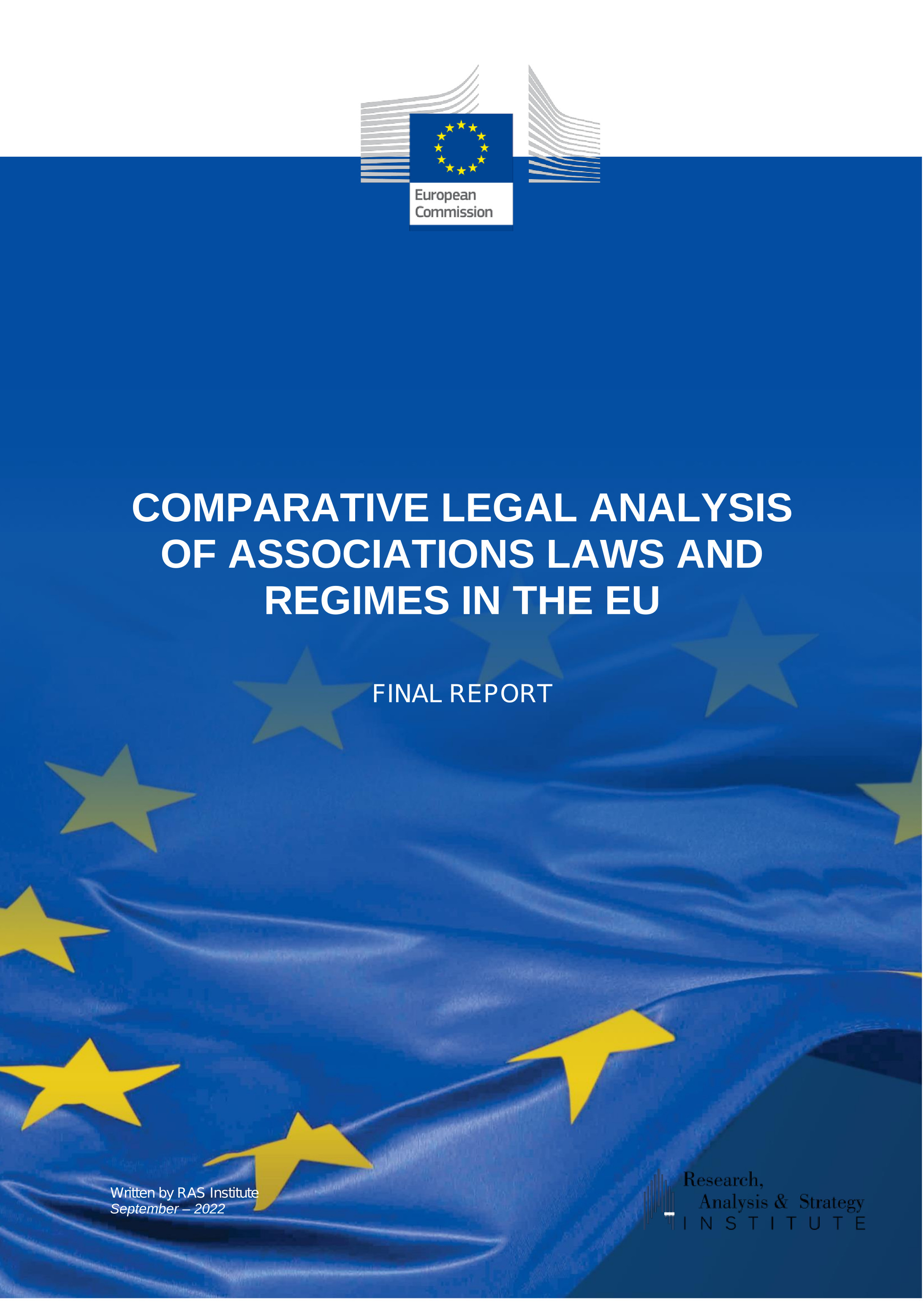The report "Comparative legal analysis of associations laws and regimes in the EU" commissioned to Research, Analysis and Strategy Institute by the European Commission (DG GROW) has been published


The report Comparative legal analysis of associations laws and regimes in the EU commissioned to Research. Analysis and Strategy Institute by the European Commission (DG GROW) has already been published.
According to the study, there is no single definition of association for all EU Member States. However, some patterns emerge. The first one is that the term “association” refers to a non-profit organization. Non-profit associations therefore exist in all Member States.
Therefore, making profit cannot be a primary objective. It can also be observed that associations target those activities that aim to benefit the entire community (public benefit) (AT, BG, CZ, DE, EE, EL, HU, IE, IT, LU, LV, MT, PL, SK) or the members of the association only (mutual benefit) (BE, CY, DK, ES, FI, FR, HR, LT, NL, PT, RO, SE, SI). Another essential feature of associations is the “profit non-distribution constraint” among the associations' members. What profit non-distribution means is that distributing the profit from economic activities among the associations’ members is not allowed. It doesn’t mean, however, that associations cannot carry out economic activities (AT, BE, BG, CY, CZ, DE, DK, ES, FR, HU, IE, IT, LT, LU, LV, MT, PL, PT, RO, SE, SI, SK), which they can if such activities are in connection with the primary objectives of the association.
A common aspect is that a number of persons is required to form an association. Differences do exist in terms of the number of persons required. It varies from two to three natural and/or legal persons (AT, BE, BG, DE, DK, ES, FI, FR, HR, IT, LT, LU, LV, NL, PL, PT, RO, SE, SI). However, in the case of HU, a minimum of ten natural persons, legal persons, or organizations without legal personality is required. In the case of EL, a minimum of twenty persons is required.
There are a number of typologies that can be used to categorize associations. Common ways consider whether associations are more formal or informal, what types of activities they have, and whether their activities aim for a public or mutual benefit. Formal and informal associations. A first classification concerns Member States that distinguish between formal and informal associations, such as: de facto associations and registered associations (BE and FR); common regime associations and associations under a specific regime (ES); A very limited number of Member States also have « economic associations » in addition to « non-profit » associations (DE, SE, DK). 10 unregistered associations (FI); associations with legal personality (all MSs except from SK and PL in terms of ordinary associations) and associations without legal personality (SK and PL in terms of ordinary associations) and associations with limited legal capacity (IT and NL); ordinary associations and registered associations (PL). All these countries, regardless of the terminology used, distinguish between more formalized associations and less formal ones.
The second type of classification distinguishes associations based on their activity. For example, in LV and DK there are voluntary associations (i.e., a landowners' association or a cultural association), cooperative housing associations, and special associations, such as purchasing associations. At the same time in PT, there is a distinction between mutual associations, mercy associations, community and self-managed subsectors, and associations with altruistic purposes. In HR, for instance, associations can be categorized on the basis of the following types of activities: technical education, protection and rescue, environmental protection, health care, sport, social activity, sustainable development, education, science and research, international cooperation, human rights, culture and art, economy, spirituality, politics, victim representation. As regards other Member States, similar categories exist. Public or mutual benefit aim Another classification is based on public or mutual benefit aim. Some Member States label associations as public benefit associations (AT, BG, CZ, DE, EE, EL, HU, IE, LU, MT, PL, SK), while others classify them as mutual benefit associations (BE, CY, DK, ES, FI, FR, HR, LT, NL, PT, RO, SE, SI). It is also possible, however, that both classifications exist next to each other (IT, LV). A public benefit association carries out activities with the aim to benefit the entire community. From this point of view, the activities carried out for such purposes vary from Member State to Member State and can take either of the following forms: charitable activities, protection of fundamental rights and human rights, development of civil society, education, science, culture, promotion of health, support for sports, environmental protection, provision of assistance in cases of catastrophes and extraordinary situations, raising the social welfare standards of society (especially for low-income and socially disadvantaged person groups). A mutual benefit association, on the other hand, carries out activities with the aim to promote the interests of the members of the association.
The study is available on this link.